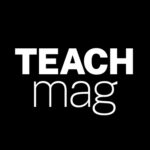Originally published in TEACH Magazine, January/February Issue 2002
By Diane Bisson
When trying to instil values in children, “Kids are like modeling clay.” However, when attempting to analyze the way they learn, there is an urgency to allow kids to “unmold.” We, as caregivers, parents, teachers, and tutors, need to create an environment where the child is given the freedom to go past the set parameters that are oftentimes imposed on him. Opening the door to experimentation and creativity is one of the ways we can guide children to discover their strengths and abilities, and to recognize their weaknesses. I believe most curriculum, with planning, organising, and effort, can be adapted, modified, and implemented to suit the student’s preferred way of learning.
However, may I add that making use of the MST method (Multi-Sensory Teaching) is one of the better ways for a student to understand and retain given information. MST incorporates three main learning styles: the auditory, which comprises the listening and the verbal learner; the visual, which includes the print as well as the picture learner; and the kinesthetic, which contains the tactile learner. Using MST, teachers can make learning fun and exciting by inviting, challenging, and allowing the student to choose his own way of working.
The Auditory Learner
TEACH is the largest national education publication in Canada. We support good teachers and teaching and believe in innovation in education.


